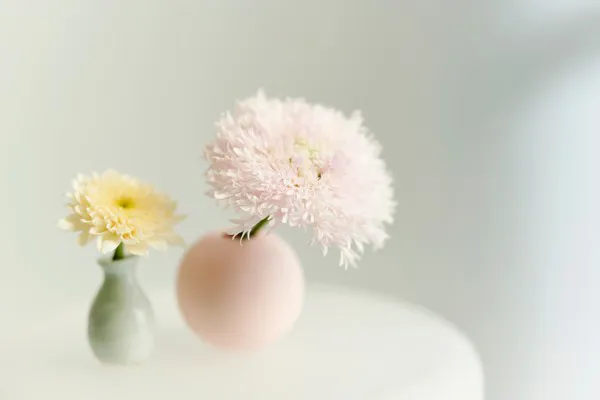Flowers that come in yellow, white, green, pink, green, red, orange, purple or bronze, sometimes with a diameter of up to 14 cm: the chrysanthemum is a real beauty. The chrysanthemum will therefore be gracing the Flower Agenda in February. It’s travelled a long way - all the way from Asia - but now feels entirely at home here.

Credit: Funnyhowflowersdothat.co.uk
Origin
The flower has been highly regarded in China and Japan for a very long time. For example, in China only the nobility were allowed to have chrysanthemums, and in Japan the chrysanthemum is considered the national flower. The flower symbolises a long and happy life both there and in other parts of the Far East. The chrysanthemum only came to Europe in 1688 from what were then the Dutch East Indies. Linnaeus christened it Chrysanthemum indicum: ‘the golden yellow flower from the Indies’.
Range & assortment
We can divide chrysanthemums into three flower types:
- The disbudded chrysanthemum: one larger flower per stem.
- The spray chrysanthemum: multiple small flowers.
- The Santini chrysanthemum: maximum stem length 55 cm, the smaller flowers are higher than on the spray chrysanthemum.
We also differentiate between single-flowered, double-flowered, anemone, spider and pompon types. New chrysanthemum varieties are often faster growing and have new colours, flower shapes and sizes. Colour-treated chrysanthemums are also a growing trend.
Inspiration & information
Inspiring images of every flower on the Flower Agenda have been produced in line with the Horticulture Sector Trends 2020 (Groenbranche Trends 2020). These trends are a translation of the latest consumer trends aimed at the horticulture sector.
For more information:
Funnyhowflowersdothat.co.uk
